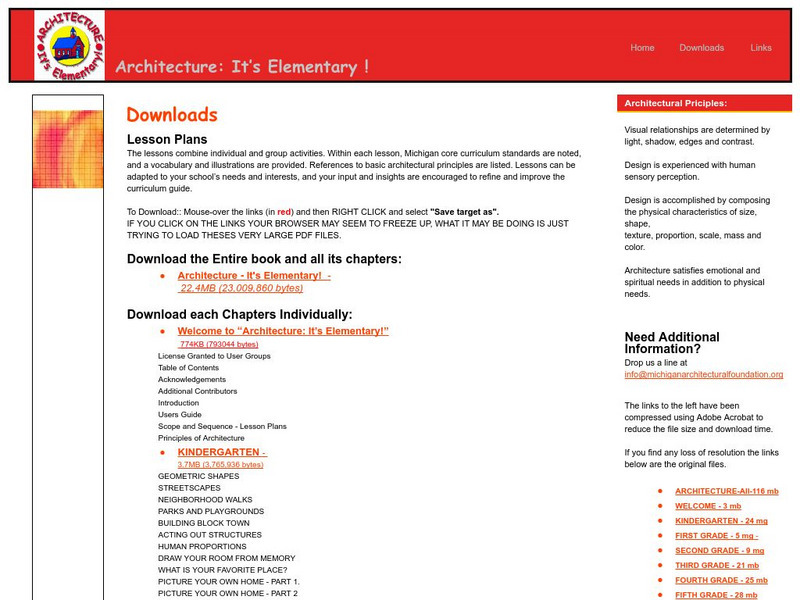Curated OER
I Like Me and I Like You
Students use the book "I Like Me!" to create a context for investigating self-concept (how one feels about self). They have the objective of realizing their rights and responsibilities. Students work in small groups conducting interviews...
Curated OER
Arkansas is Our State: Differentiating Between a State and a Country
An ambitious geography instructional activity is geared toward kindergartners. They discover what the differences are between states and countries. They look at maps of Arkansas, and learn what the shapes and lines mean. Additionally,...
Curated OER
EEEK! A Spider!
Youngsters complete a unit of lessons based on the story "Little Miss Muffet." They predict what will happen in the story, and use context clues to look for meaning in the words. They research information about spiders using the Internet...
Advocates for Human Rights
Voices of Iraqi Refugees
The stated goal of this resource is to provide learners with basic facts about and build empathy for Iraqi refugees. To do so elementary classes develop a plan for how to welcome refugees to their classroom. Middle schoolers read...
Curated OER
"Reviewing Facts Through 10" Lesson Plan
Explore the joy of math with you little learners! They practice creating math problems with numbers from a fact family using numbers 1-10. They work independently with a set of connecting cubes to aid them in creating number sentences...
Curated OER
Japanese Carp Kites/Children's Day
Students listen to the story "A Carp for Kimiko" and discuss its lesson and theme. They design and create their own carp kite in celebration of Children's Day. They discuss gender discrimination and how that makes them feel.
Curated OER
Japanese Carp Kites
Students listen to the story A Carp for Kimiko and discuss its theme/lesson. Then they identify and are introduced to the Japanese holiday, Children's Day, formerly known as Boy's Day. Students also design and create their own carp kite....
Curated OER
A Sense of Community
Students brainstorm characteristics they associate with a community. In groups, they discover the role of a town square and create their own model. They also identify the various roles in keeping the community going and role play their...
Curated OER
From Corn To Tortillas
Students investigate the food known as the tortilla. They research the growth cycle of the corn plant and how tortillas are made from it. The importance of the tortilla according to the Hispanic culture is explained to the students. The...
Curated OER
To Every Thing There Is A Season...
Students use the artwork by Robert Harris to examine the four seasons. In groups, they identify the clothing worn in the artwork and create a dance which resembles the painting. They also practice reading a thermometer and identify...
Curated OER
Let's Catch Some Dirt From the Air
Young scholars investigate the dirt in the air. In this air quality lesson, students use aluminum foil and petroleum jelly to discover if there is dirt in the air. Young scholars discuss results.
Curated OER
Patterns
Students create and extend patterns. In this pattern lesson, students learn to identify patterns using multiple senses. Students work at centers in small groups to explore and extend their understanding of patterns.
Curated OER
Caterpillars To Butterflies
Students observe the life cycle of a butterfly. They read butterfly/caterpillar themed books. They sequence the lifecycle from eggs on a leaf to an adult butterfly. They release their butterflies into a natural habitat after singing and...
Curated OER
Let's Catch Some Dirt From the Air
Students create "catchers" that collect dirt particles from the air. They observe the particulate matter that is collected from the air and discuss the effects and causes of air pollution.
Curated OER
Ani-mania
Young scholars view and discuss Robert Harris' farm landscapes and create their own mural out of wood. In groups, they discuss various issues affecting pets throughout the world and create a way to protest or celebrate the issue. They...
Curated OER
Caterpillars To Butterflies
Students gain an appreciation of nature by teaching them about the life cycle of the butterfly. They set up a terrarium so they can observe the changes a caterpillar goes through.
Curated OER
Reviewing Facts Through 10
Manipulatives are always fun for children to use. They use connecting cubes and blocks to solve addition and subtraction word problems with numbers up to 10. They then play a math game and use their cube to create number sentences....
Curated OER
Animals at the Zoo
Students identify a variety of animals that can be found at the zoo and select one to conduct research on. In pairs they conduct Internet research, complete a graphic organizer chart, and create a two slide PowerPoint presentation.
Curated OER
Imagination Travel
Students watch video segments on shapes and patterns. They create their own pattern within shapes.
Other
Cool Curriculum: Great Ideas for the K College Classroom
An expansive collection of in-depth art curriculum materials for class levels from kindergarten through college.
John F. Kennedy Center
The Kennedy Center: John F. Kennedy Center for the Performing Arts
One of the finest sites of its kind on the Internet, ArtsEdge is dedicated to supporting arts education through such initiatives as curriculum development, cross-curricular teaching, and technology integration. Find arts-related...
Incredible Art Department
The Incredible Art Department: Early Childhood Art Lessons
Art lessons for infants up to kindergarten level. They are sorted into categories of age levels, medium used, subject matter, art period, artist, and cross-curricular connections.
Incredible Art Department
The Incredible Art Department: Elementary Art Lessons
Art lessons for elementary students. They are sorted into categories of grade levels, medium used, subject matter, art period, artist, and cross-curricular connections.
Other
Aia Michigan: Architecture: It's Elementary!
The It's Elementary! curriculum guide is home to numerous lesson plans and activities designed for teaching architecture to students in grades K-5. You'll find activities involving math, science, visual art, and social studies. Includes...





















